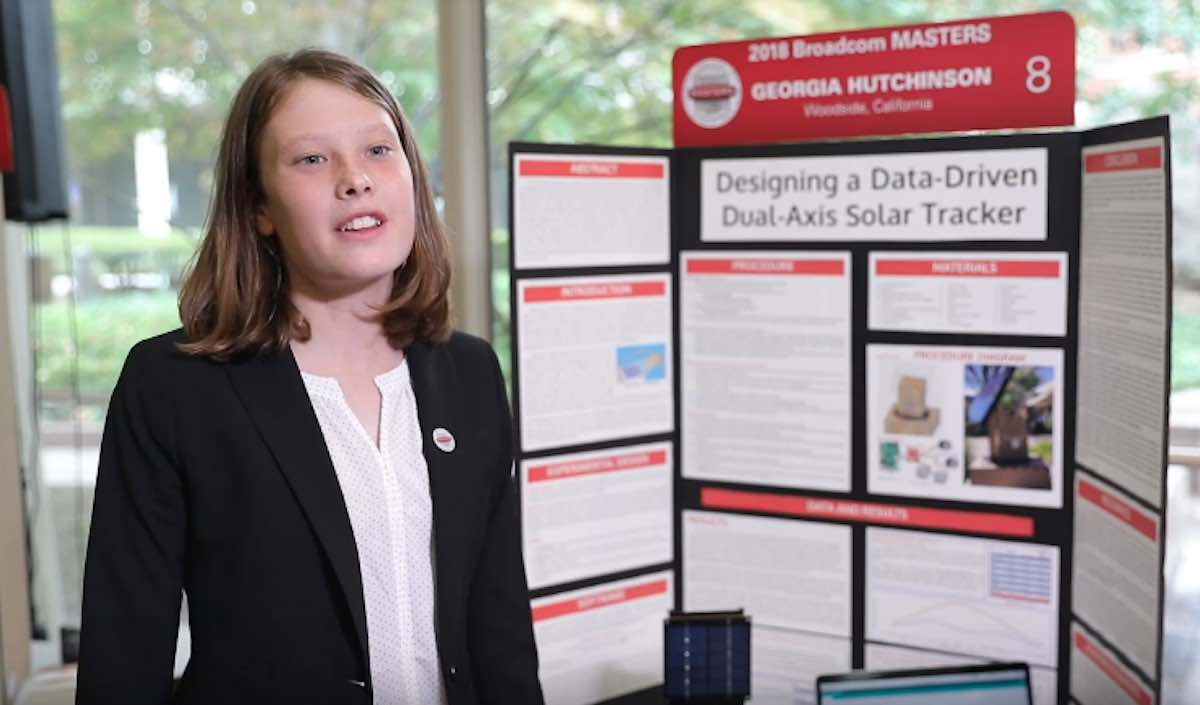A 13-year-old scientist has just won a top science prize by creating a program that allows solar panels to generate more electricity by following the location of the sun from dawn until dusk.
Georgia Hutchinson’s experiment is built on a simple premise: if a solar panel is able to follow the sun at all times, then they can generate more electricity. The more electricity they generate, the faster they can pay off their purchase costs and utility bills.
Most solar panels are only set up to point in one direction – and while there are solar panels that are equipped with trackers that allow them to follow the sun by moving along two axises, they are incredibly expensive.
So as a means of maximizing a panel’s exposure of the sun, Georgia borrowed an equation that was developed by the National Oceanic and Atmospheric Administration (NOAA).
RELATED: Girl Scout Wrote Letters to Companies, Urging Them to Ditch Plastic – And They Did
The equation uses a person’s location to state exactly where the sun will be in the sky at any given time. She then used the equation to program a solar tracker so that the panel could point directly towards the sun at all times. After that, she ran some experiments to compare exactly how much electricity her data-driven solar panel could generate in comparison to a fixed-point panel – and her results were impressive.
“In the Bay Area, data-driven dual-axis solar trackers could reduce the payback period of solar by up to 40 percent,” says Georgia.
Georgia first became inspired to develop her cost-effective program when her family traveled to Corvallis, Oregon from Woodside, California so they could see the solar eclipse in 2017.
“On the way home, my uncle called to say that he had just invested in solar [panels], and that in 20 years, he would have free electricity,” says Georgia. “I thought 20 years was way too long.”
“I realized if man knew where and when the eclipse will be, we must know where the sun will be at other times,” she says. “This inspired a data-driven dual-axis solar tracker.”
In recognition for her program, the seventh grader just won the $25,000 top prize in the National Broadcom MASTERS Competition, one of the most prestigious science and engineering competitions for middle schoolers in America. Over 2,500 young teenage scientists are considered for their experiments in STEM-related fields.
CHECK OUT: 8th Grader Creates Website That Pairs Shelter Dogs With Compatible Owners– and it’s Working
“The Broadcom MASTERS taps ten percent of young people participating in state and regional science fairs throughout the STEM ecosystem to participate in this national competition,” said Paula Golden, President of the Broadcom Foundation.
“These kids are exemplars of the quality work being done by middles schoolers with their teachers, mentors and families throughout the US. The Top 300 and 30 finalists are representative of special young people who are preparing themselves to solve the grand challenges we face through the world,” she added. “The Broadcom Foundation is honored to champion young scientists, engineers and innovators and spur them on to greatness.”
Power Up With Positivity By Sharing This Exciting Story With Your Friends – Photo by Broadcom MASTERS





















What an incredible mind! Way to go girl!